Published: October 31, 2022
Modified: December 12, 2024
Table of Contents
LDO Regulator with ECO Function?
Automatic Mode Shift ECO Function?
Seamless ECO Function?
Manual/Automatic Mode Shift Type ECO Function?
This story is about power management ICs that prolong battery operation during sleep mode.
One day, Bunta, a third-year fresh employee, looking a little tired and sleepy, comes to Atsuo, a veteran.
*Click here to the previous serial content:
Vol. 1 IoT for Energy Harvesting: Solar Panel Can’t Drive System till Morning…
Help Me, Senpai! Series Vol.2
Stop Sleeping Mobile Device from Consuming Battery Charge!
 Rookie B
Rookie B
Senpai, I’m developing a mobile device and its battery doesn’t operate as long as I expected. The device has long sleep periods. It seems that it consumes current during sleep mode.
 Senpai A
Senpai A
Hi, Bunta! I see, a device operating under sleep mode. It mustn’t stop its operation, right?
 Rookie B
Rookie B
Basically, the device will be used with its power turned on, so there needs to be a sleep mode. Of course, it turns off the display to reduce energy consumption. However, it can’t reach the planned operating time.
 Senpai A
Senpai A
That’s often the case. I guess it succeeds in suppressing the sleep current of the MCU, but peripheral parts around the MCU such as power management ICs may cause increase in current consumption. Is that right?
 Rookie B
Rookie B
The device uses an LDO regulator, which consumes large current.
 Senpai A
Senpai A
I got it. You need to take care of energy consumption in the power supply circuit, too, because it constantly operates. Are there many LDO regulators achieving current consumption of 1 µA during operation?
 Rookie B
Rookie B
You are right, but…. Low current consumption LDOs tend to have bad transient response characteristics. Power saving has reached its limit…
 Senpai A
Senpai A
Come on, never give up there. How about, for example, using an LDO regulator with an ECO function?
LDO Regulator with ECO Function?
 Rookie B
Rookie B
An ECO function? What on earth is that?
 Senpai A
Senpai A
It’s an LDO regulator which has three operating modes called three-mode shift: standby, sleep and active. Using this will make low current consumption and good transient response come true at the same time.
 Rookie B
Rookie B
Is it a pair of LDO regulators?
 Senpai A
Senpai A
No, it isn’t. Although there may be products having two LDOs in one package, the package of such a product becomes large because the number of pins increases. Plus, they require two sets of input and output capacitors. In contrast, this product has a smaller package because it only needs pins for a single LDO. The same applies to input and output capacitors: it requires only one set of them. In other words, it’s like that the LDO has two amplifiers. One features low current consumption but instead has inferior transient response, and the other features superior transient response but has large current consumption. The LDO switches these two amplifiers on and off.
LDO regulators with this ECO function are used in mobile phones which turn off the display during standby mode or phone calls. There are many devices with sleep mode operation than we expect.
 Rookie B
Rookie B
Sounds good. How does the LDO switch its three operating modes?
 Senpai A
Senpai A
Same as ordinary LDO regulators, the standby mode is controlled by a chip enable pin. To switch between sleep and active modes, the IC uses a unique pin named ECO.

Figure 1: Block Diagram of LDO Regulator with Manual Mode Shift ECO Function
 Rookie B
Rookie B
I see, the IC has two control pins. But there is no pin available on the MCU because the system has more than one power supply line.
Automatic Mode Shift ECO Function?
 Senpai A
Senpai A
Well, then, there is an ECO function which shifts operating mode automatically. It automatically switches between sleep and active modes depending on system load.
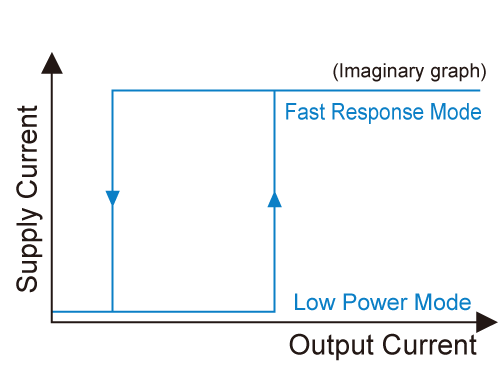
Figure 2: Operation Image of Automatic Mode Shift ECO Function
 Rookie B
Rookie B
Wow! It automatically switches operating modes according to the amount of output current. It’s like the difference between manual and automatic transmission of a car, isn’t it?
 Senpai A
Senpai A
Haha, yes, it has only a two-speed gear, though. Like transmission of a car, there are advantages and disadvantages of manual mode shift and automatic mode shift.
Manual mode shift lets the user determine the switching point but instead requires an MCU to control it. On the other hand, automatic mode shift requires no MCU but the user cannot determine the switching point.
 Rookie B
Rookie B
Ah huh, it’s like manual transmission gives joy of driving but makes hand and legs tired, and automatic transmission makes driving easier but gives less joy, right?
 Senpai A
Senpai A
You stick to cars!?
By the way, just as the transmission of cars is evolving to continuously variable transmission, or CVT, so is the ECO function.
In the case of cars, automatic transmission has evolved from three-speed shift to ten-speed shift. It is achieved by making many switching points to smoothly increase and decrease speed.
However, such mechanism makes the transmission complicated and expensive, which is the reason compact cars don’t have ten-speed shift.
In contrast, the mechanism of CVT is simple and cheap, so even compact cars can use it.
 Rookie B
Rookie B
Senpai, you are wandering away from the subject.
 Senpai A
Senpai A
Oops, sorry…. Huh? You made me do so…
Anyway, there is an ECO function which evolved to achieve a CVT-like operation. It means although ten-speed shift was impossible to achieve due to higher cost, CVT was possible. It is called a seamless ECO function.
Seamless ECO Function?
 Rookie B
Rookie B
Seamless? What does it mean?
 Senpai A
Senpai A
I guess there are no steps between modes.
Apart from the name, this type increases current consumption in proportion to load current. As a matter of course, it improves load transient response characteristics. However, in the case of a car, it can’t shift up anymore if it reaches its upper limit of transmission. The same is true for the seamless ECO function: its operation is fixed at fast response mode once it reaches its upper limit.
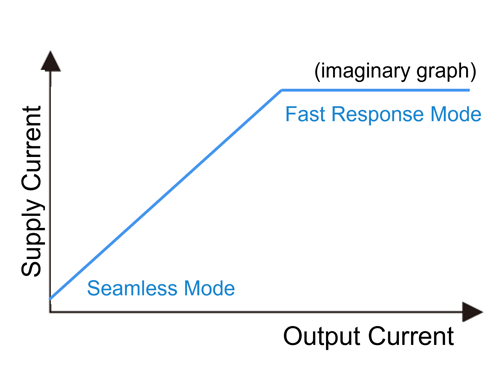
Figure 3: Operation Image of Seamless Type ECO Function
 Rookie B
Rookie B
This seems to be the best for the system! CVT of cars is also evolving to be an essential mechanism for improving fuel efficiency.
 Senpai A
Senpai A
That’s right. The actual characteristic is shown below. It is optimal for use in applications with very long sleep time and low current, such as IoT devices.
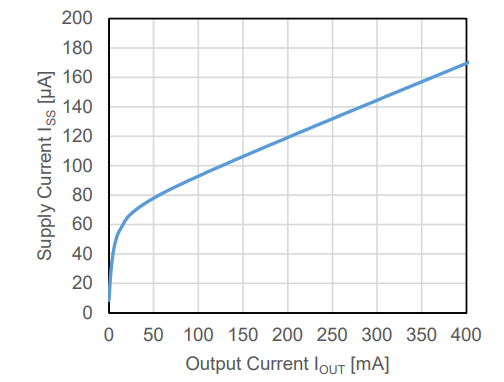 Figure 4: Supply Current vs Output Current of RP122x
Figure 4: Supply Current vs Output Current of RP122x
 Rookie B
Rookie B
It doesn’t look like an LDO with low current consumption…
 Senpai A
Senpai A
That’s incorrect. There is a trade-off relation between low current consumption and fast transient response, right? No matter how low a current consumption it may achieve, it can’t be used if it has slow transient response. Therefore, this graph implies that the IC operates in fast response mode when it outputs a few mA or more. In other words, the IC seamlessly switches its operating modes.
 Rookie B
Rookie B
That’s pretty deep. It seems that I need to select another IC if I want to make it operate in low current consumption mode at 50 mA.
 Senpai A
Senpai A
I think there are few cases like that, though. This makes designers in manufacturing companies have difficulties.
There is also another type that takes a different approach. It is called a manual/automatic shift type, though it cannot be used in this case. While it requires a terminal controlled by an MCU, it has an automatic shift type inside.
Manual/Automatic Mode Shift Type ECO Function?
 Rookie B
Rookie B
What? What does it mean?
 Senpai A
Senpai A
You can choose either automatic mode shift mode or fast response mode with a specially designed auto-eco pin, or AE pin. You can use it with its operation fixed at fast response mode.
 Figure 5: Block Diagram of LDO with Manual/Automatic ECO Function
Figure 5: Block Diagram of LDO with Manual/Automatic ECO Function
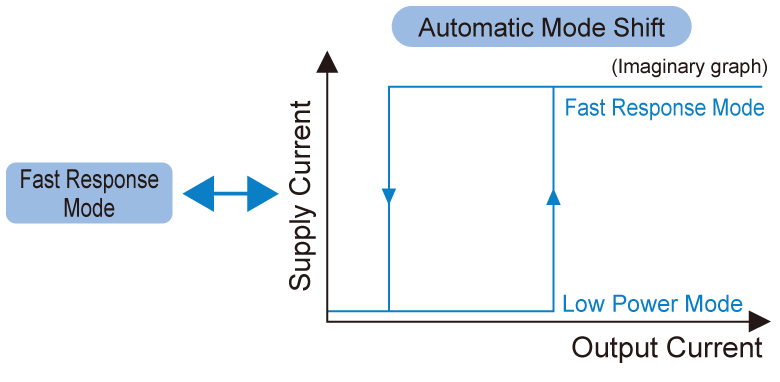 Figure 6: Operation Image of Manual/Automatic Mode Shift ECO Function
Figure 6: Operation Image of Manual/Automatic Mode Shift ECO Function
 Rookie B
Rookie B
For what operating conditions is the IC designed?
 Senpai A
Senpai A
Load current varies, right? It increases during communication and decreases thereafter. In such a situation, over- and undershoots can sometimes occur. This type is beneficial to prevent the IC from incorrectly switching its operating mode due to such a change.
 Rookie B
Rookie B
I got it. The automatic mode shift has another disadvantage except the inability to change the switching point freely. Using this type can prevent such a problem by fixing it at fast response mode. It is designed with deep thought.
 Senpai A
Senpai A
Hey, it’s time to order and try a sample. “Switching” is the very key to success.
 Rookie B
Rookie B
You put together well! That’s right. Which one to choose?
For more information on the ECO function, click here.
The ECO function is explained in a FAQ page.
LDO Regulators with Manual Mode Shift ECO Function
Series IOUT VIN VOUT Notes R1163x 150mA 2.0V~6.0V 1.5V~5.0V Reverse Current Protection, Discharge Function R1160N 200mA 1.4V~6.0V 0.8V~3.3V R1161N 300mA 1.4V~6.0V 0.8V~3.3V Discharge Function R1191x 300mA 3.5V~16.0V 2.0V~15.0V Reverse Current Protection, Thermal Shutdown, Discharge Function
LDO Regulators with Automatic Mode Shift ECO Function
Series IOUT VIN VOUT Notes RP118x 100mA 1.7V~5.5V 1.2V~3.6V Discharge Function RP124x 100mA 1.7V~5.5V 1.2V~3.6V Discharge Function, Battery Monitor R1155x 150mA 3.5V~24.0V Internally Fixed: 2.5V~12.0V, Externally Specified: 2.5V~23.0V Reverse Current Protection, Thermal Shutdown RP202x 200mA 1.4V~5.25V 0.8V~4.0V Soft Start, Discharge Function R1510S 300mA 3.5V~36.0V 2.5V~12.0V Built-in Reset IC, Thermal Shutdown R5326K 150mA x2 1.4V~6.0V 0.8V~4.2V 2 Channels, Discharge Function
LDO Regulators with Seamless Type ECO Function
Series IOUT VIN VOUT Notes R1116x 150mA 1.8V~6.0V 1.5V~4.0V Discharge Function RP123x 250mA 1.9V~5.5V 1.2V~4.8V Low Output Noise、Inrush Current Limit、Thermal Shutdown, Discharge Function RP122x 400mA 1.9V~5.5V 1.2~4.8V Low Output Noise, Inrush Current Limit, Thermal Shutdown, Discharge Function
LDO Regulators with Manual/Automatic Mode Shift ECO Function
Series IOUT VIN VOUT Notes RP201K 150mA 1.4V~5.25V 0.8V~4.0V Discharge Function RP200x 300mA 1.4V~5.25V 0.8V~4.0V Discharge Function
Afterword
This is the second article of our serial contents introducing how our products help you.
If you have questions, please let us know.


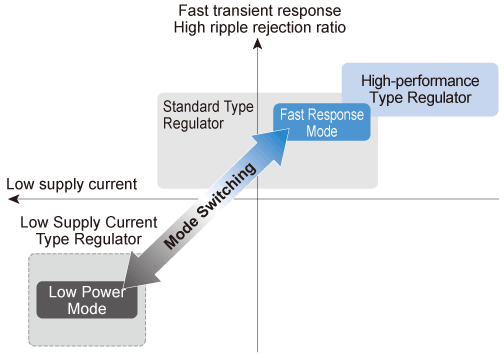




Comment